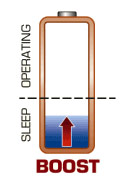D
Deleted member 4210
Guest
This season it seems I've taken a few more calls than usual from ebike purchasers that have found their batteries completely dead. And unable to charge them. And maybe only a season or two old.
This can happen when a ebike battery is unwittingly left sitting for a few months with a low charge or even no charge, and then the battery for various reasons won't charge or work again. (I'm not going to get into the technical reasons for it occurring here, as there is much debate, as it sometimes involves the BMS).
What are your options ?
1. Buy a new battery from the OEM - (ouch, if it's only a year or two old)
2. Take a risk and buy one from China via the typical platforms that offer that choice. (Might be more 'expensive' in the long run if you dont know for sure they are same quality and grade A cells, or marketed as such but not what you get. And you can't verify it, bc they are very good at putting them in the same OEM wrappers.)
3. Find a reputable battery rebuilder, who does this for a living, and may be able to retain your cells, and possibly even install a better BMS, or higher Density batteries.
4. Investigate the possibility of replacing the BMS, which if you are electronically inclined and do a lot of research first of how to videos, which can explore how to do some superficial testing, to see if a new BMS will resolve the issue. (I've tried this on a couple bricked batteries, and got the BMS from the original seller, but it dIdnt work. It was worth a shot, before going the route of one the other 3 options, since I was able to persuade them to send one free, except for shipping. The downside was waiting a long time - 6 to 8 weeks)
Not a great feeling to have this occur, since the battery is usually the most expensive single component on an ebike.
So make sure before you take that '3 month winter vacay' to Florida or Arizona, you have your battery charged at least 50% (but not 100%), and you will likely avoid turning your precious ebike battery into a useless brick.
This can happen when a ebike battery is unwittingly left sitting for a few months with a low charge or even no charge, and then the battery for various reasons won't charge or work again. (I'm not going to get into the technical reasons for it occurring here, as there is much debate, as it sometimes involves the BMS).
What are your options ?
1. Buy a new battery from the OEM - (ouch, if it's only a year or two old)
2. Take a risk and buy one from China via the typical platforms that offer that choice. (Might be more 'expensive' in the long run if you dont know for sure they are same quality and grade A cells, or marketed as such but not what you get. And you can't verify it, bc they are very good at putting them in the same OEM wrappers.)
3. Find a reputable battery rebuilder, who does this for a living, and may be able to retain your cells, and possibly even install a better BMS, or higher Density batteries.
4. Investigate the possibility of replacing the BMS, which if you are electronically inclined and do a lot of research first of how to videos, which can explore how to do some superficial testing, to see if a new BMS will resolve the issue. (I've tried this on a couple bricked batteries, and got the BMS from the original seller, but it dIdnt work. It was worth a shot, before going the route of one the other 3 options, since I was able to persuade them to send one free, except for shipping. The downside was waiting a long time - 6 to 8 weeks)
Not a great feeling to have this occur, since the battery is usually the most expensive single component on an ebike.
So make sure before you take that '3 month winter vacay' to Florida or Arizona, you have your battery charged at least 50% (but not 100%), and you will likely avoid turning your precious ebike battery into a useless brick.


